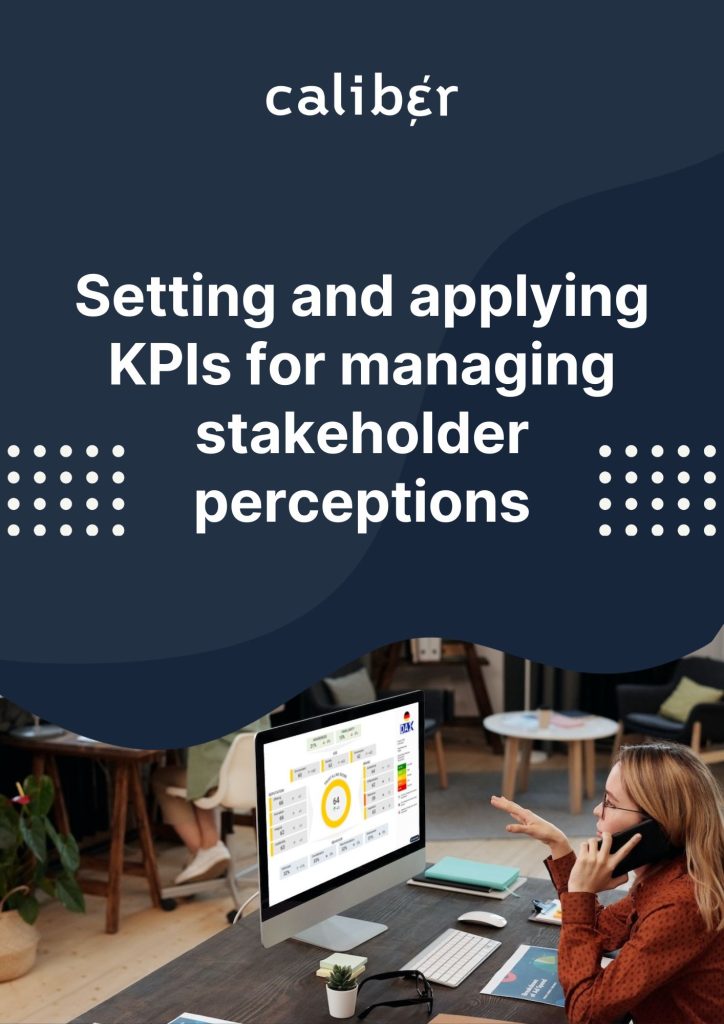
Audi
Audi, a subsidiary of the Volkswagen Group, is renowned as one of the leading German car brands in the premium segment

In the realm of corporate affairs and communication, building trust with stakeholders is of paramount importance. To achieve this, it is crucial to set Key Performance Indicators (KPIs) that effectively manage stakeholder perceptions.
KPIs provide tangible measurements and actionable insights, enabling corporate affairs and communication departments to strategically address stakeholder concerns and improve relationships.
In this article, we will explore the significance of setting and applying KPIs for managing stakeholder perceptions and discuss key recommendations tailored for professionals working in corporate affairs and communication.
Corporate affairs and communication professionals play an essential role in shaping stakeholder perceptions.
The way stakeholders perceive an organization can significantly impact its reputation, credibility, and public image. Proactively managing stakeholder perceptions helps build trust, enhances brand value, and mitigates reputational risks.
Overall, there are three important reasons why KPIs play a pivotal role for companies that are trying to manage stakeholder perceptions:
1.
KPIs allow organizations to establish clear objectives and priorities, ensuring communication efforts align with overall business goals.
2.
They provide a basis for evaluating performance and making data-driven decisions. Regularly tracking and analyzing KPIs enables the communications teams to make data-driven decisions and adjust their strategies to improve results.
3.
KPIs provide a way to demonstrate the ROI of communications efforts and justify the resources and budget allocated to the communications function. This can help secure buy-in from senior management and ensure ongoing support for communications initiatives.

Audi, a subsidiary of the Volkswagen Group, is renowned as one of the leading German car brands in the premium segment
Setting KPIs intended for managing stakeholder perceptions should focus on providing measurable indicators that reflect perceptions of the company’s overall strategy and in addition, offer valuable insights into the effectiveness of communication strategies and initiatives.
By aligning KPIs with the overall corporate strategy, corporate affairs, and communication professionals can ensure that stakeholder management efforts are in line with organizational goals and foster trust and credibility.
Before engaging in any measurement, we recommend that the company takes the following approach in preparation:
Corporate affairs and communication professionals should identify the key stakeholders relevant to their organization. This includes customers, employees, investors, regulators, and the wider community.
Each stakeholder group may have different perceptions and expectations, which are important to understand in order to know what will influence their behavior towards you.
Conduct stakeholder analysis, engage in meaningful dialogue with key individuals, and gather feedback to gain insights into their perceptions and concerns.
Companies must apply a credible, unbiased framework for measuring corporate reputation.
Caliber’s Real-Time Tracker (RTT) is a methodology developed with the purpose of measuring corporate reputation across stakeholders and markets, presenting the data in a way that is easy to understand, interpret and share internally.
Regardless of the chosen framework, indicators must be relevant, meaningful, and directly related to stakeholder perceptions. These indicators should be measurable and aligned with the goals of corporate affairs and communication departments.
Link the chosen KPIs directly to the organization’s corporate strategy. Evaluate how each KPI contributes to the achievement of strategic objectives.
This alignment ensures that stakeholder management efforts – through corporate affairs and communication activities – are integrated into the broader organizational goals, reinforcing trust and credibility.
Establish specific targets or benchmarks for each KPI. These targets should be challenging yet attainable, reflecting desired improvements or industry standards.
Setting clear objectives helps corporate affairs and communication professionals measure progress, evaluate the success of their initiatives, and demonstrate the impact of their activities on stakeholder perceptions.
Based on the insights gained from monitoring and analyzing the data, formulate appropriate, concrete actions to address stakeholder concerns and improve perceptions.
Communicate the results of these actions and initiatives to stakeholders transparently, as proof points of delivering on the corporate strategy and intent.
Sharing progress and outcomes reinforces the organization’s commitment to stakeholder engagement, builds trust, and enhances the credibility of corporate affairs and communication departments.

Managing stakeholder perceptions is crucial for establishing trust and maintaining a positive reputation. Key Performance Indicators (KPIs) are essential tools in this endeavor, offering focus, data-driven insights, and ROI justification.
By identifying key stakeholders, implementing a credible measurement framework, and aligning KPIs with corporate strategy, organizations can effectively address stakeholder concerns.
Regular monitoring and analysis of data enable targeted actions to improve perceptions and transparently communicate progress, reinforcing stakeholder engagement and credibility.
Embracing KPIs empowers corporate affairs and communication professionals to proactively shape stakeholder perceptions, build strong relationships, and ensure long-term success by fostering trust, enhancing brand value, and mitigating reputational risks.
If you want to get started on measuring stakeholder perceptions and setting KPIs to improve your corporate reputation, reach out to us via [email protected]

© 2024 Group Caliber | All Rights Reserved | VAT: DK39314320